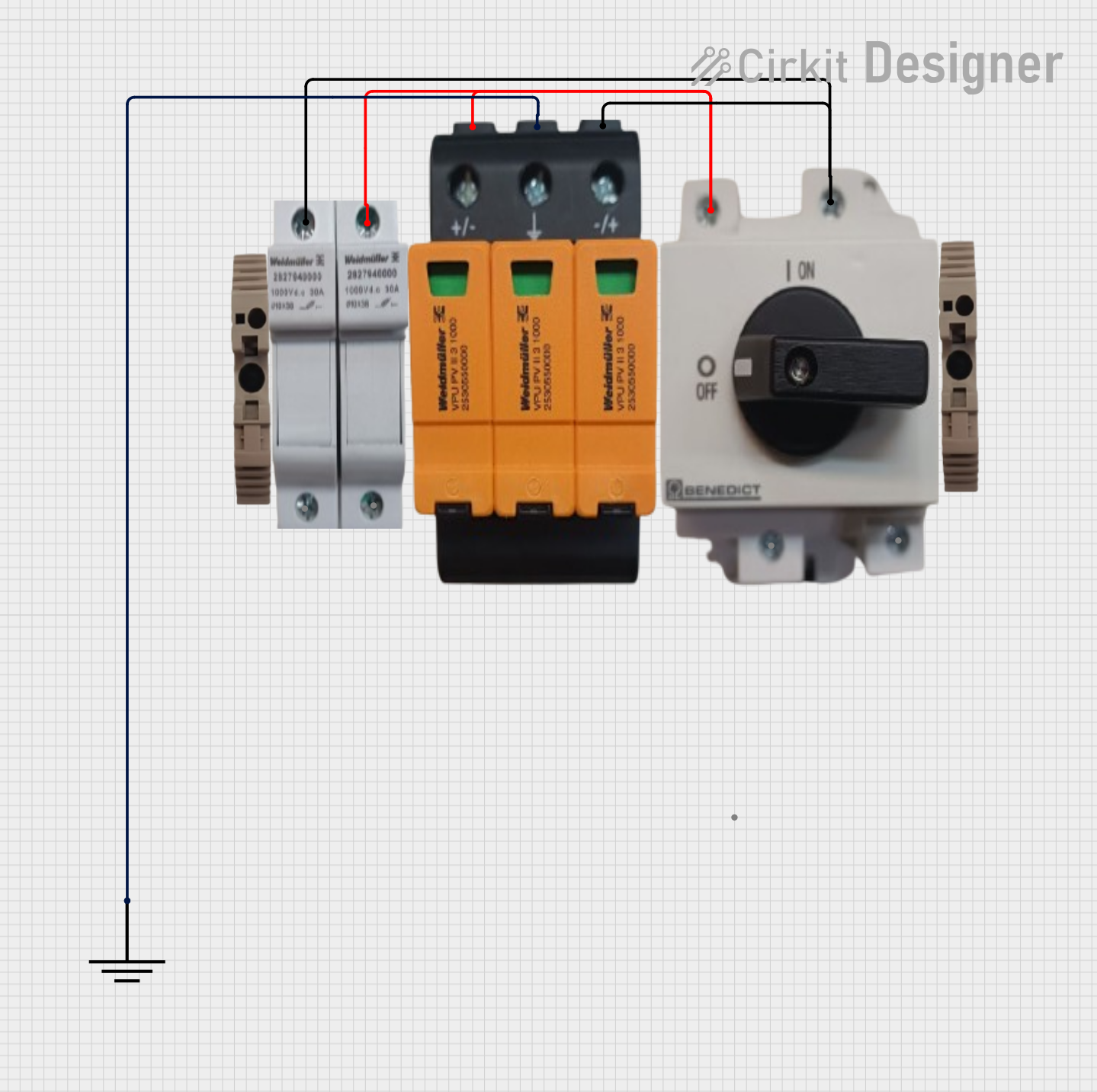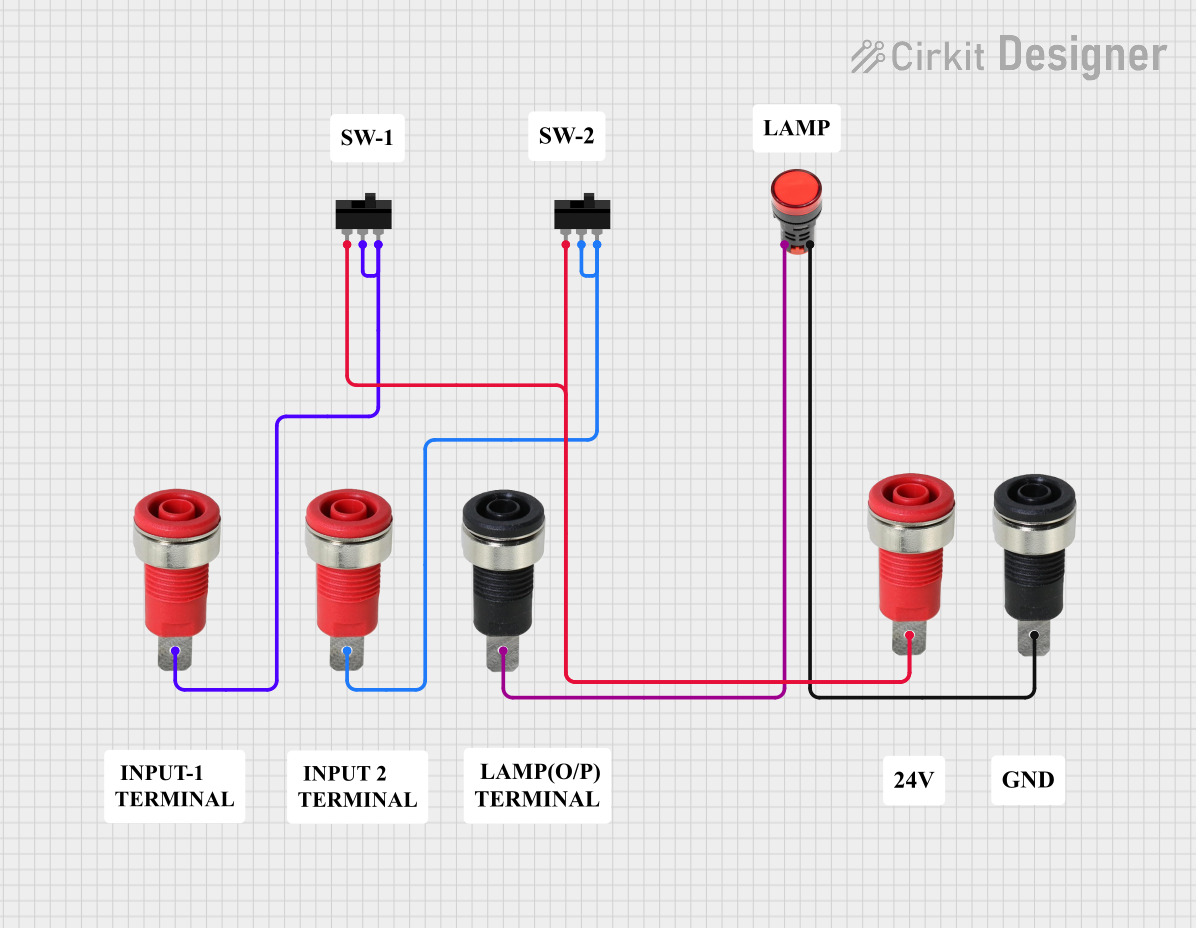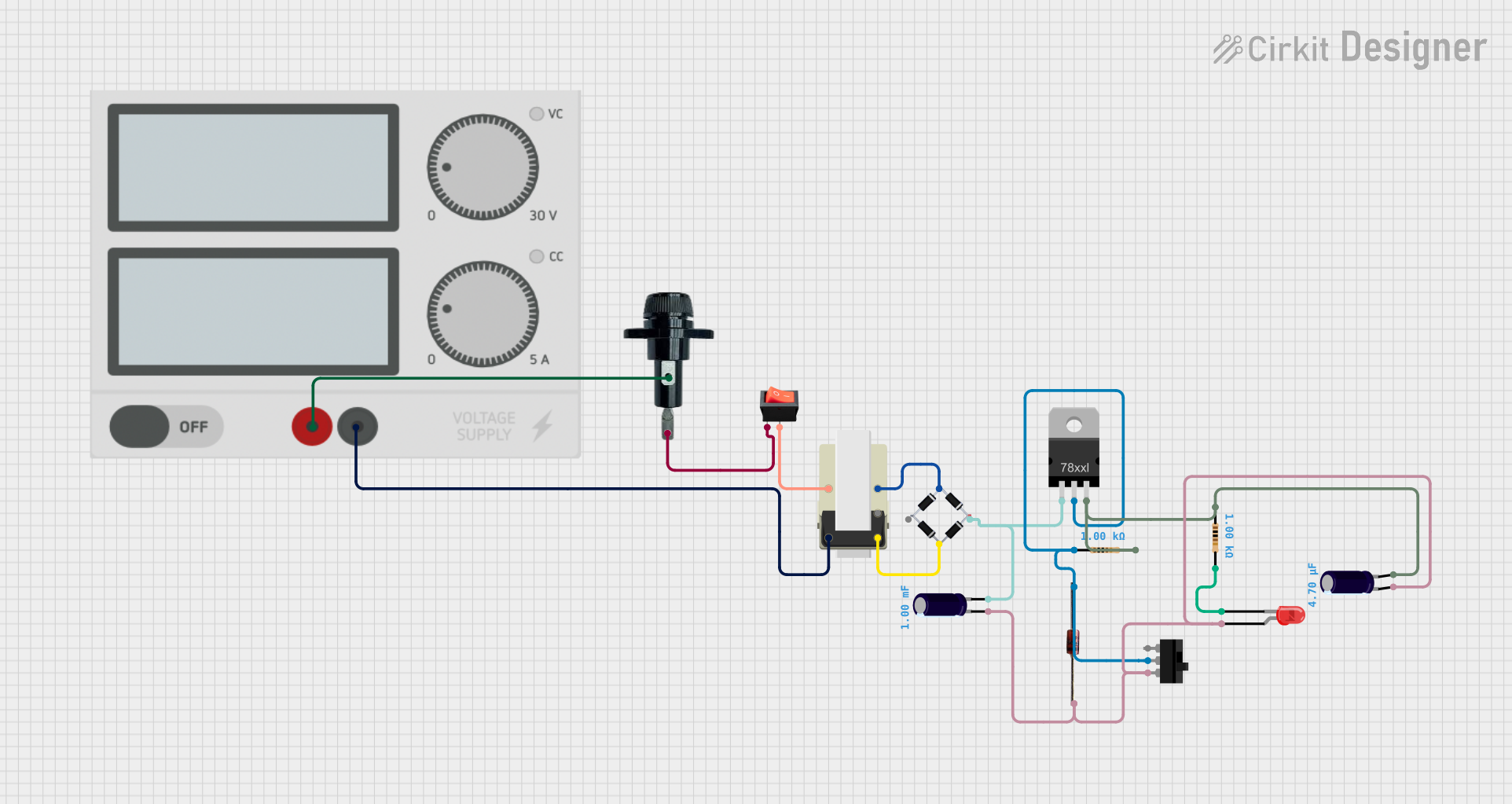
How to Use Fuse: Examples, Pinouts, and Specs

 Design with Fuse in Cirkit Designer
Design with Fuse in Cirkit DesignerIntroduction
A fuse is a safety device designed to protect electrical circuits from excessive current. It operates by breaking the circuit when the current exceeds a predefined threshold, thereby preventing damage to components and reducing the risk of fire. Fuses are widely used in various applications, including household appliances, automotive systems, industrial equipment, and electronic circuits.
Explore Projects Built with Fuse

 Open Project in Cirkit Designer
Open Project in Cirkit Designer
 Open Project in Cirkit Designer
Open Project in Cirkit Designer
 Open Project in Cirkit Designer
Open Project in Cirkit Designer
 Open Project in Cirkit Designer
Open Project in Cirkit DesignerExplore Projects Built with Fuse

 Open Project in Cirkit Designer
Open Project in Cirkit Designer
 Open Project in Cirkit Designer
Open Project in Cirkit Designer
 Open Project in Cirkit Designer
Open Project in Cirkit Designer
 Open Project in Cirkit Designer
Open Project in Cirkit DesignerCommon Applications and Use Cases
- Household Appliances: Protects devices like microwaves, refrigerators, and washing machines.
- Automotive Systems: Safeguards electrical systems in vehicles, such as lighting and infotainment systems.
- Industrial Equipment: Ensures the safety of heavy machinery and control systems.
- Electronic Circuits: Prevents damage to sensitive components in power supplies, amplifiers, and microcontroller-based systems.
Technical Specifications
Fuses come in various types, sizes, and ratings. Below are the key technical details to consider:
General Specifications
- Voltage Rating: Typically ranges from 12V to 600V, depending on the application.
- Current Rating: Commonly available from 0.1A to 100A or more.
- Breaking Capacity: The maximum current the fuse can safely interrupt (e.g., 1kA, 10kA).
- Response Time: Can be fast-blow (quick response) or slow-blow (delayed response).
- Material: Fuse elements are often made of zinc, copper, or silver.
Pin Configuration and Descriptions
Fuses do not have traditional pins like ICs but are categorized by their physical form factor and mounting style. Below is a table summarizing common types:
| Fuse Type | Description |
|---|---|
| Cartridge Fuse | Cylindrical body with metal caps on both ends; used in industrial and home applications. |
| Blade Fuse | Flat, two-pronged design; commonly used in automotive systems. |
| Surface Mount Fuse | Compact design for PCB mounting; used in modern electronic devices. |
| Resettable Fuse | Polymer-based fuse that resets after the fault is cleared. |
Usage Instructions
How to Use a Fuse in a Circuit
Determine the Fuse Rating:
- Select a fuse with a current rating slightly higher than the normal operating current of the circuit.
- Ensure the voltage rating of the fuse matches or exceeds the circuit's operating voltage.
Install the Fuse:
- For cartridge or blade fuses, insert the fuse into the appropriate holder or socket.
- For surface-mount fuses, solder the fuse onto the PCB pads.
Test the Circuit:
- Power on the circuit and verify that the fuse does not blow under normal operating conditions.
Replace Blown Fuses:
- If the fuse blows, identify and fix the cause of the overcurrent before replacing the fuse.
Important Considerations and Best Practices
- Always use a fuse with the correct rating to avoid under- or over-protection.
- For circuits with high inrush currents (e.g., motors), use a slow-blow fuse to prevent nuisance tripping.
- Ensure proper ventilation around the fuse to prevent overheating.
- Use a fuse holder or clip for easy replacement and secure connections.
Example: Using a Fuse with an Arduino UNO
When powering an Arduino UNO from an external power source, a fuse can protect the board from overcurrent. Below is an example circuit and code:
Circuit Setup
- Connect a 5V power supply to the Arduino's VIN pin through a 500mA fast-blow fuse.
- Ensure the ground of the power supply is connected to the Arduino's GND pin.
Code Example
// Example code for Arduino UNO to demonstrate basic functionality
// This code blinks an LED connected to pin 13
void setup() {
pinMode(13, OUTPUT); // Set pin 13 as an output for the LED
}
void loop() {
digitalWrite(13, HIGH); // Turn the LED on
delay(1000); // Wait for 1 second
digitalWrite(13, LOW); // Turn the LED off
delay(1000); // Wait for 1 second
}
Troubleshooting and FAQs
Common Issues
Fuse Blows Repeatedly:
- Cause: The circuit is drawing more current than the fuse rating.
- Solution: Check for short circuits or reduce the load on the circuit. Use a fuse with a higher current rating if appropriate.
Fuse Does Not Blow During Overcurrent:
- Cause: The fuse rating is too high for the circuit.
- Solution: Replace the fuse with one that has a lower current rating.
Fuse Overheats Without Blowing:
- Cause: Poor contact in the fuse holder or excessive ambient temperature.
- Solution: Ensure secure connections and improve ventilation around the fuse.
FAQs
Q: Can I replace a blown fuse with a wire or foil?
A: No, this is extremely dangerous and defeats the purpose of the fuse. Always replace a blown fuse with one of the correct rating.Q: How do I choose between a fast-blow and a slow-blow fuse?
A: Use a fast-blow fuse for sensitive electronics and a slow-blow fuse for circuits with inrush currents, such as motors or transformers.Q: Can a resettable fuse replace a traditional fuse?
A: Yes, in some cases. Resettable fuses are ideal for applications where frequent overcurrent conditions are expected, but they may not handle high fault currents as effectively as traditional fuses.